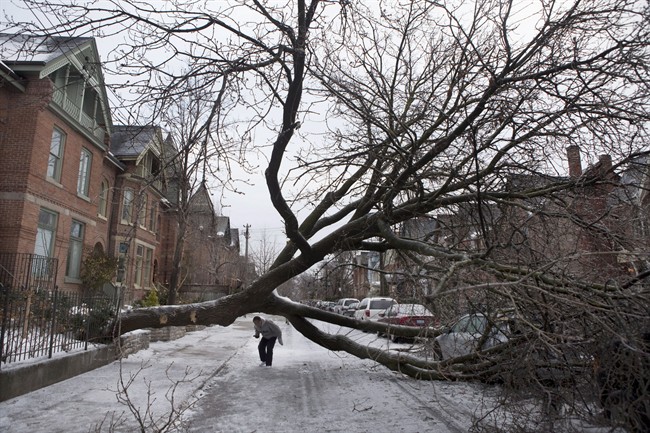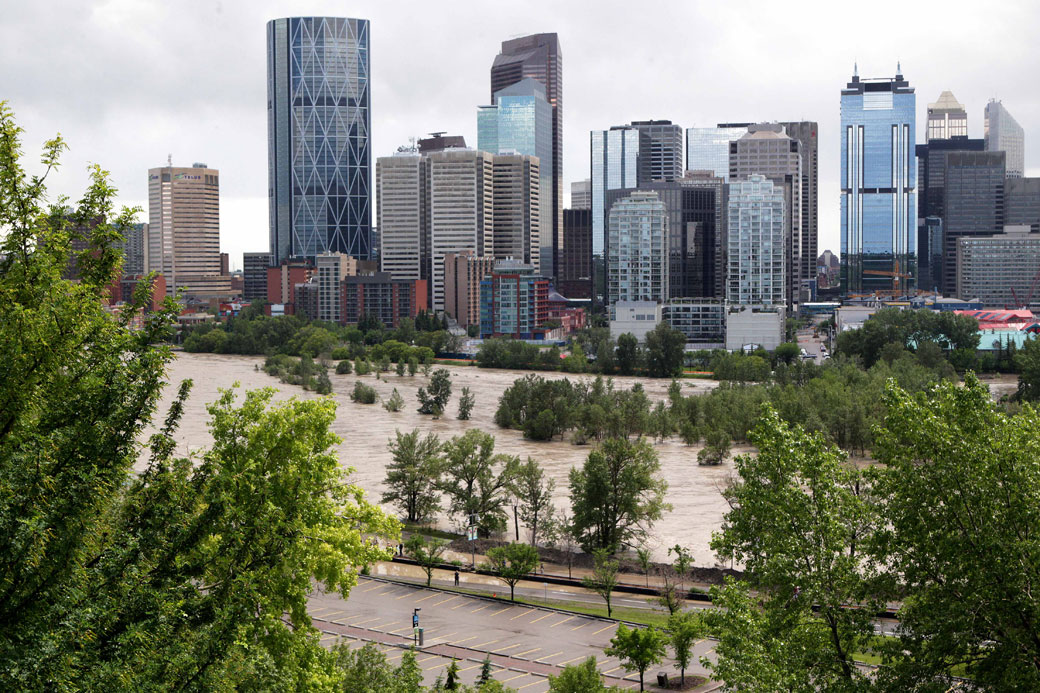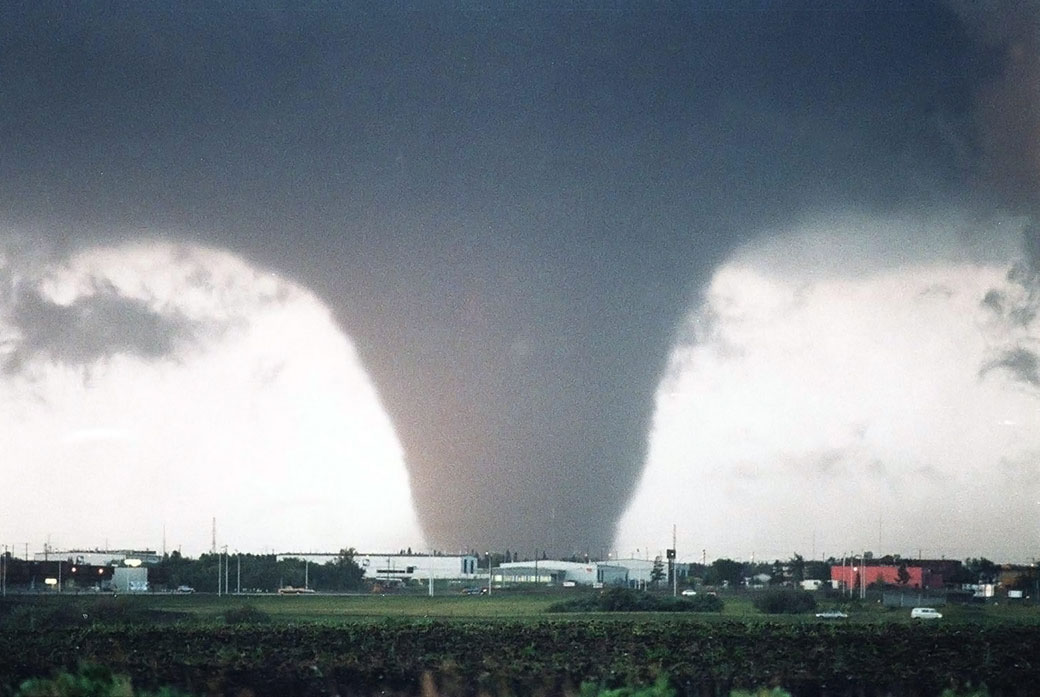TORONTO – If there’s anything that extreme weather is teaching us, it’s that cities are on the hook for dealing with its repercussions.

You only have to look as far back as last year: The floods in Calgary left the city with a hefty price tag of $6 billion. The flooding in Toronto was estimated to cost around $1 billion.
Canada experiences a varying degree of weather: each year, we get tornadoes, droughts, ice storms, floods, hurricanes, you name it. If this is indeed the new reality, then how cities deal with extreme weather events is one of the major tools that can help lower costs and save lives.
READ MORE: Extreme weather of 2013 triggered record insurance claims
“It’s still one of the Number One questions out there for a lot of municipalities, which is, ‘How do we prepare?'” said Ewa Jackson, the Acting Director of ICLEI Canada, an association that is comprised of local governments from around the world that focus on local action.
From April 2 to 4, ICLEI Canada hosted the 2014 Livable Cities Forum which aimed to build sustainable and resilient communities.
“We’re at this state that the disaster doesn’t have to happen in your neighbourhood anymore,” Jackson told Global News. “It used to be ‘Oh, that happened there, it probably won’t happen here…’ and now nobody can say that anymore, because maybe it’s an ice storm, a flood, or a heat wave — 2013 was a very strange year for weather.”
Indeed it was.
In June, it was the Alberta floods. In July, it was the Toronto floods. More flooding in Manitoba and Ontario. There was the ice storm in Ontario and eastern Canada in December. And 2014 didn’t start off any better, with polar vortexes, blizzards, and a winter that seemed like it would never end.

ICLEI Canada is just one organization that aims at helping cities plan for the future. The Canadian Climate Forum (CCF) is another. The CCF is holding a 2014 Symposium on Extreme Weather: Impacts, Challenges and Adaptations in Ottawa from April 22-24.
Paul Kovacs, Executive Director of the Institute for Catastrophic Loss Reduction and Adjunct Research Professor for Western University’s Economic Department, who spoke at ICLEI’s Livable Cities Forum and who will be speaking at the CCF, told Global News that there will be more extreme events in our future.
READ MORE: Great Lakes mayors to work together to adapt municipalities to climate change
The conferences come in the wake of an Intergovernmental Panel on Climate Change (IPCC) report detailing the vulnerability of communities to climate change.
In a webinar hosted by the Science Media Centre, Kovacs, also the lead author of Chapter 26 of the IPCC’s Working Group II report, addressed the findings.
- 2021 heat dome fuelled by climate change, intensified wildfire risk: study
- B.C. introduces legislation recognizing Haida Gwaii Indigenous title
- Whale experts confident B.C. orca calf will survive, find family if rescue plan succeeds
- Plastic production cap still contentious as Ottawa set to host treaty talks
“Very high temperatures and extreme rainfall events are having a big impact on urban centres in a way we had just not seen in the past,” Kovacs said. “Our infrastructure is already vulnerable.”
Cities like Winnipeg, vulnerable to not only floods, but high heat and tornadoes are paying attention.
READ MORE: Guelph to reduce carbon footprint with district energy network
“In 2005 and 2010, we’ve had major events on our rivers within Winnipeg and they’ve been in the months of June and July which is not the norm. So now when we think of our preparation, we don’t just make sandbags to be on the ready for March and April; we have sandbags on the ready for June, July, and August.”
Calgary is making changes to the Land Use Bylaw following the 2013 flood. Among other measures, buildings may need to move electrical and mechanical systems above designated flood elevations.
It’s not the first time cities have had to prepare for flooding. Hurricane Hazel, which struck Ontario in 1954, is largely responsible for the shape and geography of Toronto. In 1959, the city restricted future development in vulnerable areas and numerous dams were constructed.
Being proactive and reactive
Sarah Burch, professor at University of Waterloo’s Department of Geography and Environmental Management believes that adapting isn’t just about being reactive, but also proactive.
“Rather than just building a wall to keep out rising sea levels, can’t we build a series of wetlands that would suck up carbon, so they’re mitigation,” said Burch. “They’re very beautiful…and they can also suck up water and cushion us from storms and purify that water. So they do many things at once.”
READ MORE: How Canada’s largest city is trying to cut down on its greenhouse gas emissions
Getting residents to co-operate can be tricky, but Kovacs says, it can be done. He cites an instance in Quebec City where homes in a particular area were seeing flooded basements during rainfall events.
The city asked homeowners in the area to update their basements to install a backwater valve, something that would prevent sewage from backing up into basements.
Only 10 per cent of residents complied. The city followed up, not just once or twice, but many times, eventually receiving 100 per cent compliance. The compliance wasn’t met due to making it a bylaw, but rather the city’s persistence with residents.
In Toronto, the city has instituted the Basement Flooding Protection Subsidy Program to help residents protect themselves against flooding events. One of the subsidized measures is the backwater valve.

Kovacs said that $20 billion of damage has occurred across Canada from extreme rainfall in the last 10 years. Flooding has now surpassed fire as the costliest event to insurance companies.
“At the end of the day, when you take…extreme rainfall that can cause damage to homes and that can cause damage to municipal infrastructure…when it gets really, really hot and people are looking for a pool that’s open, looking for a cooling centre…just more storms coming through town… Almost all of those cases, the key and the initial decision-maker is a local government official.”





Comments